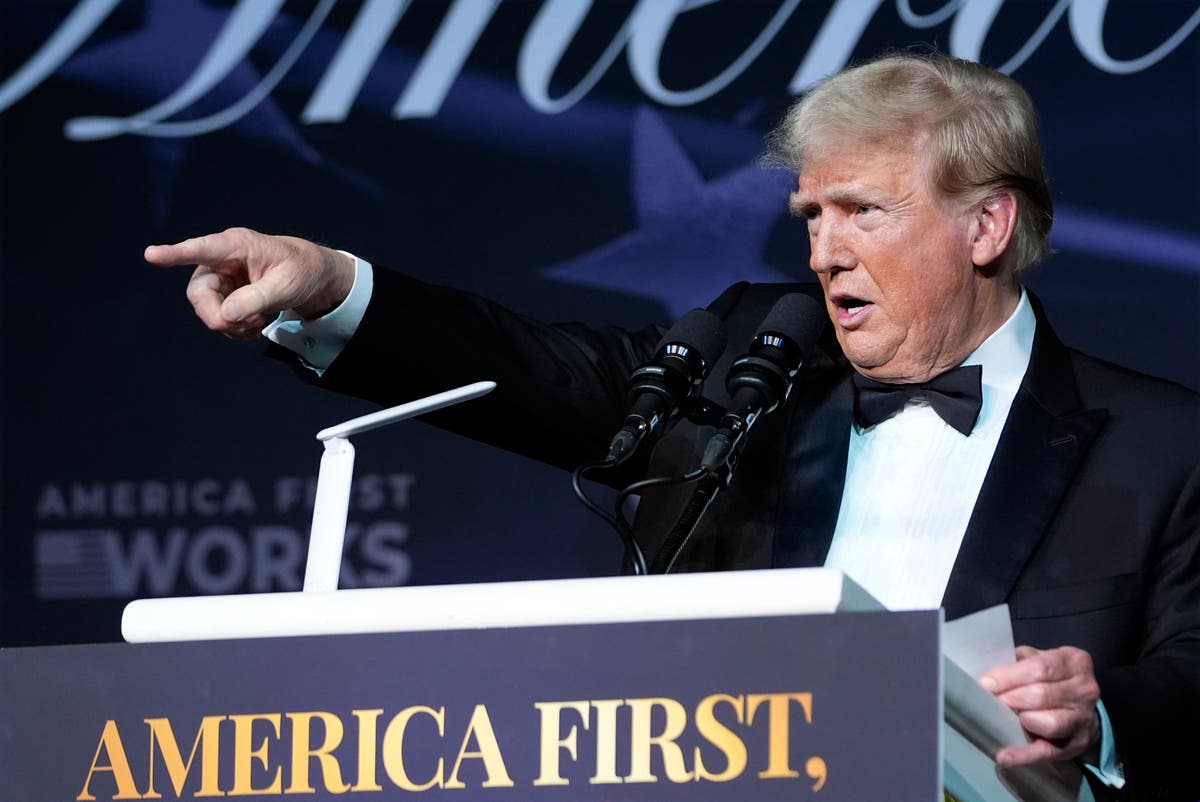Tech
Trump’s election ignites new era of US-China energy rivalry

A new trade war with China might be the biggest wild card for energy companies and economists considering the implications of former President Donald Trump’s reelection.
The China tariffs, if Trump carries them out, could cause global supply-chain shocks that will raise the costs of U.S. energy investments — not only for wind turbines, solar cells and battery materials but for the price of steel, which U.S. companies need to make good on Trump’s pledge to accelerate oil and natural gas production: “liquid gold,” as Trump called it during his campaign for president.
Trump’s policy is staked on the gamble that if foreign competitors are walled out, factories will be built in the United States that generate jobs, a homegrown supply chain and a fairer balance of trade.
Tyler Cowen, an economist at the Mercatus Center at George Mason University, drew an analogy between Trump’s “America First” pledge and the results of the higher trade walls that Britain imposed on the European Union after its “Brexit” decision in 2016.
“So far Britain continues to languish in stagnation, and foreign direct investment into the country has fallen,” Cowen wrote in an October commentary.
U.S. trade relations with the rest of the world is central to U.S.-based factories making energy technology. China and countries in its sphere of influence either control whole parts of the supply chain — for electric car batteries, for example — or have saturated the market with cheap energy tech, such as solar panels.
China and the U.S. compete across a clean energy sector that’s now building and deploying technology. That starts with electric vehicles that China produces and sells at much lower costs to consumers. Both countries are also developing ultra high-voltage grid technology and advanced nuclear reactors. China is a large supplier of transformers, the essential substation units that raise and lower voltages to move power across grids. Multiple U.S. administrations have failed to ensure more critical generators are made on U.S. soil.
Since 2021, the Biden administration has bootstrapped its clean energy agenda to U.S. industrial policy: factories and jobs. Vice President Kamala Harris’ late-campaign push to bring it all to light for voters in the industrial Midwest wasn’t enough to overcome the push by the Republican and billionaire allies like Tesla CEO Elon Musk to promote an industrial policy that’s largely built off of tariffs — rather than government spending and policy choices.
Trump’s plan revolves around tax cuts, higher tariffs and a pledge to try to scrap regulations on the electricity industry that are helping to enable to shift to zero-carbon energy.
“On Day One, President Trump will rescind every one of Joe Biden’s industry-killing, jobs-killing, pro-China and anti-American electricity regulations,” Trump says on his campaign website.
That could mean putting a hard-stop to the EPA carbon rule on existing coal and new natural gas generation. It could mean efforts at the Department of Energy to reverse course on financing certain types of new energy projects that Trump has questioned (small nuclear units and hydrogen fuel) or expressed outright antipathy for (wind energy).
It could mean the Federal Energy Regulatory Commission is a more hands-off agency, even as it tries to inject a more vigorous, long-term planning process for the electricity grid.
Fixation on trade
Trump has declared his plans to impose an import-choking 60 percent tariff on Chinese goods. Whether that is a negotiating ploy or a firm plan remains to be seen.
“What will the Trump administration do about global trade? This is the thirty-trillion-dollar question,” asked the Atlantic Council in a post-election assessment.
“He has already shown a continued fixation on trade and outlined a plan to impose high tariffs, which will reignite disputes with Beijing over this issue and likely prompt retaliation against U.S. businesses,” said Michael Schuman, a fellow with the Atlantic Council’s Global China Hub.
Trump’s election victory “marks the beginning of another roller-coaster ride in U.S. foreign policy,” Foreign Policy wrote in its election reaction. “The president-elect is poised to bring back the hallmarks of his first term: a trade war with China, a deep skepticism — even hostility — toward multilateralism, a fondness for strongmen, and an iconoclastic, tweet-from-the-hip style of dealmaking diplomacy.”
“Trump’s advisors have said his ‘peace through strength’ approach is what the country needs in this precarious moment,” the Foreign Policy commentary said. More likely is “instant and well-prepared reprisals on U.S. exports,” it said.
The Peterson Institute, a pro-trade think tank, has estimated Trump’s tariffs, if imposed, would add $2,600 a year to an average U.S. household’s costs, and other estimates are higher still.
The impact of a trade war with China on the U.S. energy sector would be direct.
Energy supply chains are critical for recovery from hurricanes like Helene and Milton this fall that wrecked power lines and damaged substations from Florida to North Carolina and Tennessee.
“During the COVID-19 pandemic, the transformer manufacturing industry was among those that experienced severe supply chain disruptions — and the impact of those disruptions have only become more pronounced in subsequent years,” the National Infrastructure Advisory Council said in a report last June on critical transformer shortages.
“Currently, an electric utility or generation developer that orders a transformer may have to wait 2 to 4 years for it to be delivered, compared to a wait of just months as recently as 2020,” the NIAC said.
In what is expected to be a reversal of the major tenets of Biden’s energy policy, Trump faces a sharply divided population and billions of dollars in energy investments made by private industry since Congress passed clean energy spending provisions in the Inflation Reduction Act.
How Trump’s policy ideas carry over to legislation is still up in the air. Votes are still rolling in from U.S. House races that are tight, giving Republicans still a tenuous hold on the chamber. The Senate flipped from a Democratic to Republican majority Tuesday night.
“As we await the outcome of the House, a few things are certain,” said Armond Cohen, executive director of the Clean Air Task Force, in a statement Wednesday. “World-changing clean energy innovation and investment is flowing from labs, start-ups, with major financial players onboard.”
‘Transformational figure’
Some conservatives on the day after the election also questioned whether Trump will forcibly steer a transition from clean energy to fossil fuels.
“Even on COVID-19 — a workable excuse for an executive power grab if ever there was one — Trump proved the rare president willing to let a good crisis go to waste,” said Gene Healy, senior vice president for policy at the libertarian Cato Institute.
“Obviously, it wasn’t self-restraint or constitutional scruple that stayed Trump’s hand. More likely: He has less interest in actually being a dictator than playing one on TV,” Healy continued. “Seizing vast new powers was never necessary to the performance, and besides, it would have been hard work for somebody lacking in self-discipline and a functional attention span.”
But surrounding Trump this time will be a team of appointees, aides and allies committed to delivering his America First vision, including Elon Musk, with his unlimited ambition.
David Sacks, a major Republican funder out of Silicon Valley, said the impact of Trump and his administration will be profound. Sacks had courted Trump’s running mate Sen. J.D. Vance in recent years, an effort that helped elevate Vance to the vice presidency.
In post-election tweets captured in a Quartz report Wednesday, Sacks said: “Trump was supposed to be the Left’s bad dream, a brief interlude between two decades of Obama/Biden/Harris rule.
“As it turns out,” Sacks wrote, “he’s the transformational figure, a fundamental break that they couldn’t stop, no matter what they threw at him.”









